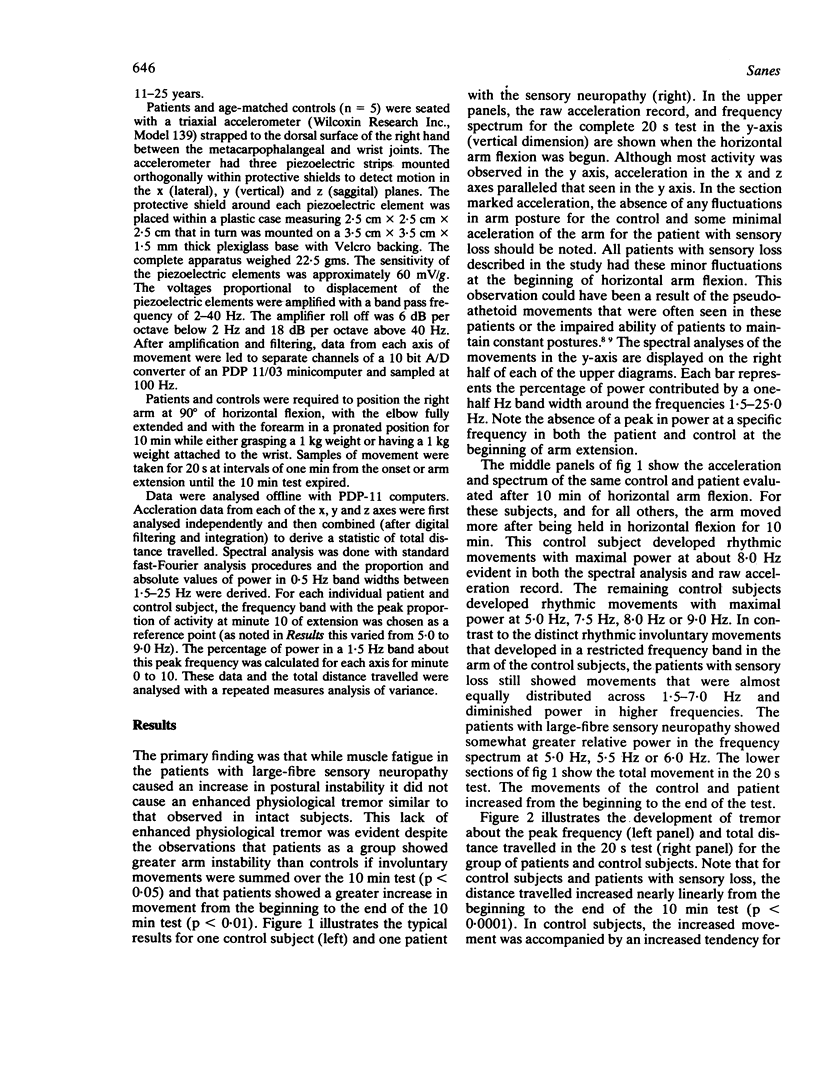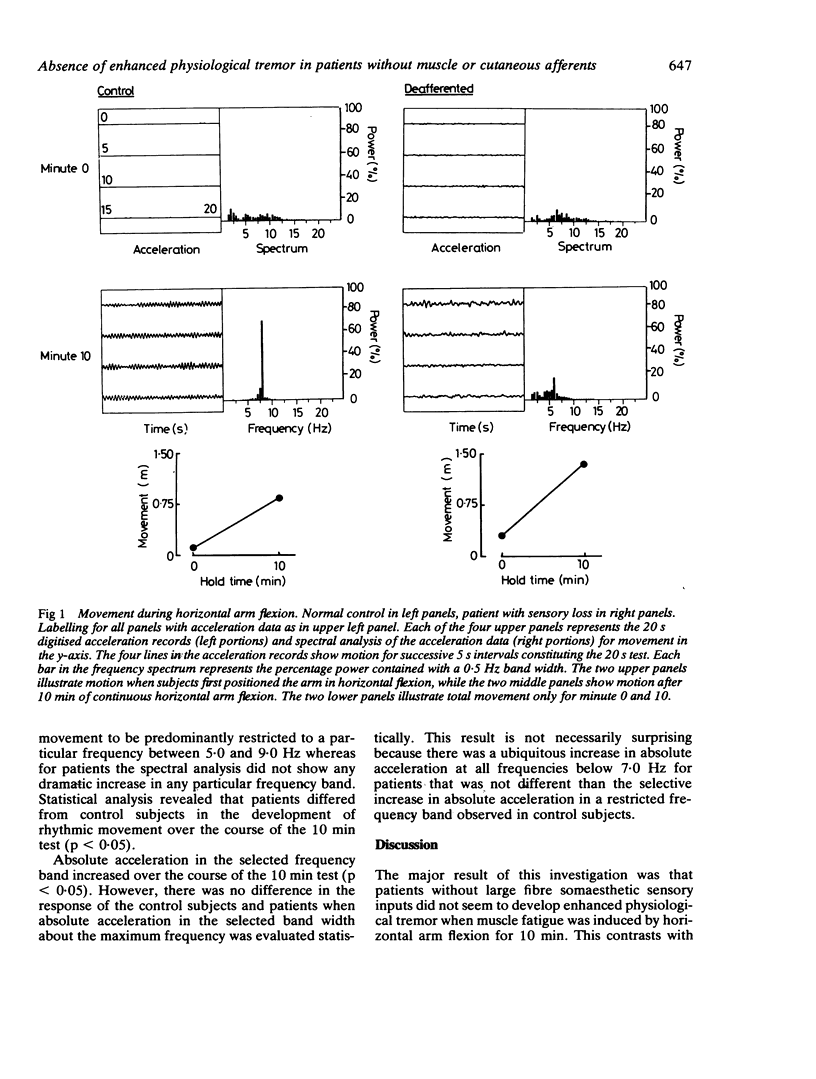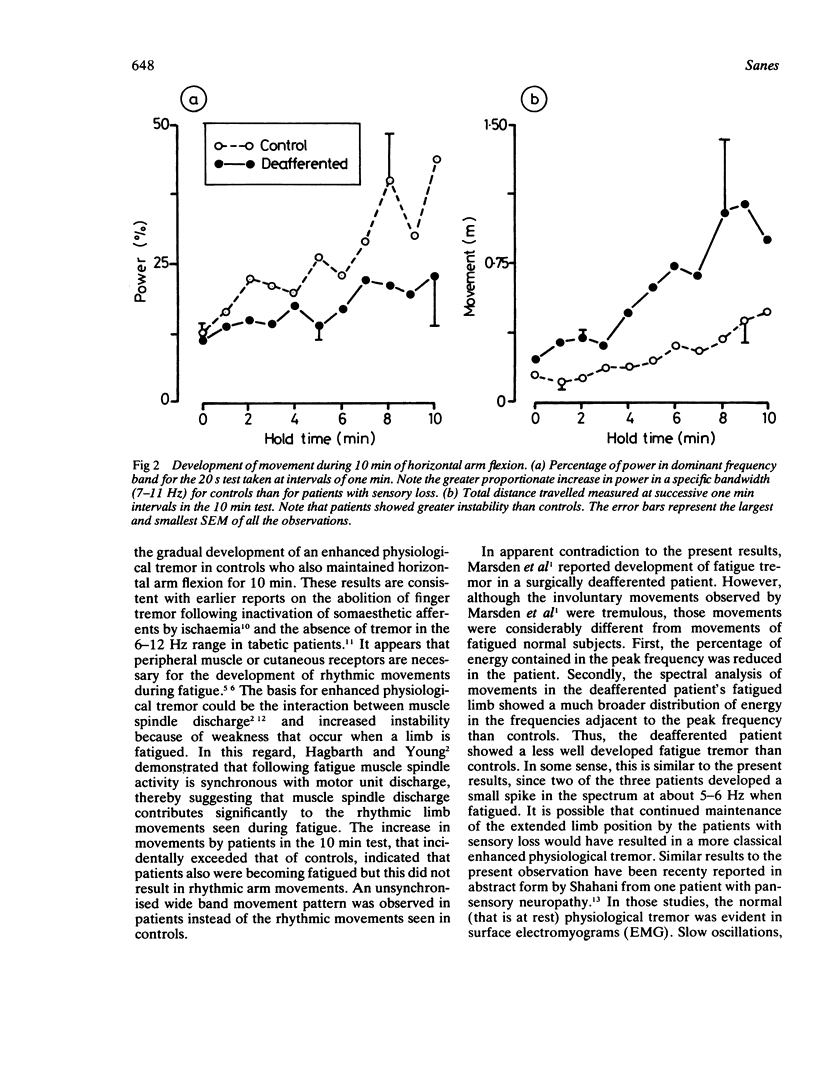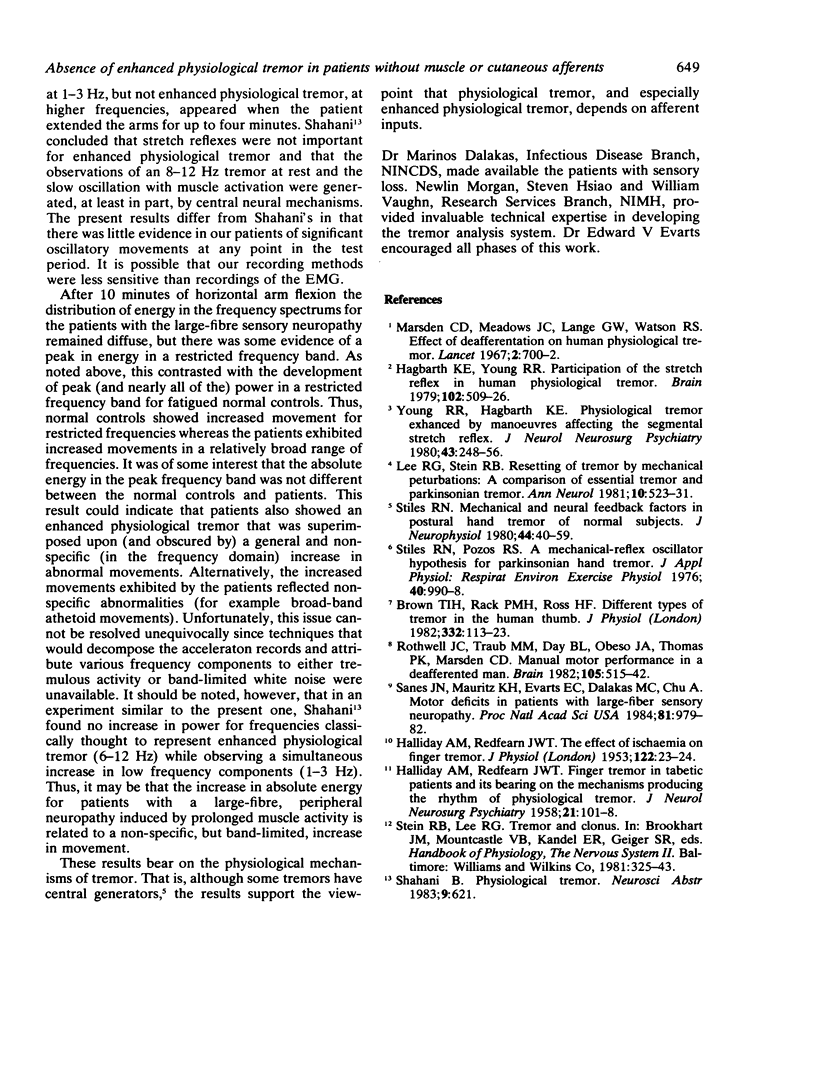Abstract
Patients with proprioceptive loss due to a neuropathy affecting large myelinated sensory nerve fibres were studied to determine the role of somaesthetic sensory inputs in enhanced physiological tremor. Involuntary movements in patients and controls attempting to hold the outstretched arm immobile were recorded during prolonged arm extension. Fatigue led to increased movements in both controls and patients but only the controls developed a rhythmic tremor. These data indicate that enhanced physiological tremor is dependent on somaesthetic afferent input.
Full text
PDF




Selected References
These references are in PubMed. This may not be the complete list of references from this article.
- Brown T. I., Rack P. M., Ross H. F. Different types of tremor in the human thumb. J Physiol. 1982 Nov;332:113–123. doi: 10.1113/jphysiol.1982.sp014404. [DOI] [PMC free article] [PubMed] [Google Scholar]
- HALLIDAY A. M., REDFEARN J. W. Finger tremor in tabetic patients and its bearing on the mechanism producing the rhythm of physiological tremor. J Neurol Neurosurg Psychiatry. 1958 May;21(2):101–108. doi: 10.1136/jnnp.21.2.101. [DOI] [PMC free article] [PubMed] [Google Scholar]
- Hagbarth K. E., Young R. R. Participation of the stretch reflex in human physiological tremor. Brain. 1979 Sep;102(3):509–526. doi: 10.1093/brain/102.3.509. [DOI] [PubMed] [Google Scholar]
- Lee R. G., Stein R. B. Resetting of tremor by mechanical perturbations: a comparison of essential tremor and parkinsonian tremor. Ann Neurol. 1981 Dec;10(6):523–531. doi: 10.1002/ana.410100606. [DOI] [PubMed] [Google Scholar]
- Marsden C. D., Meadows J. C., Lange G. W., Watson R. S. Effect of deafferentation on human physiological tremor. Lancet. 1967 Sep 30;2(7518):700–702. doi: 10.1016/s0140-6736(67)90977-4. [DOI] [PubMed] [Google Scholar]
- Rothwell J. C., Traub M. M., Day B. L., Obeso J. A., Thomas P. K., Marsden C. D. Manual motor performance in a deafferented man. Brain. 1982 Sep;105(Pt 3):515–542. doi: 10.1093/brain/105.3.515. [DOI] [PubMed] [Google Scholar]
- Sanes J. N., Mauritz K. H., Evarts E. V., Dalakas M. C., Chu A. Motor deficits in patients with large-fiber sensory neuropathy. Proc Natl Acad Sci U S A. 1984 Feb;81(3):979–982. doi: 10.1073/pnas.81.3.979. [DOI] [PMC free article] [PubMed] [Google Scholar]
- Stiles R. N. Mechanical and neural feedback factors in postural hand tremor of normal subjects. J Neurophysiol. 1980 Jul;44(1):40–59. doi: 10.1152/jn.1980.44.1.40. [DOI] [PubMed] [Google Scholar]
- Stiles R. N., Pozos R. S. A mechanical-reflex oscillator hypothesis for parkinsonian hand tremor. J Appl Physiol. 1976 Jun;40(6):990–998. doi: 10.1152/jappl.1976.40.6.990. [DOI] [PubMed] [Google Scholar]
- Young R. R., Hagbarth K. E. Physiological tremor enhanced by manoeuvres affecting the segmental stretch reflex. J Neurol Neurosurg Psychiatry. 1980 Mar;43(3):248–256. doi: 10.1136/jnnp.43.3.248. [DOI] [PMC free article] [PubMed] [Google Scholar]


